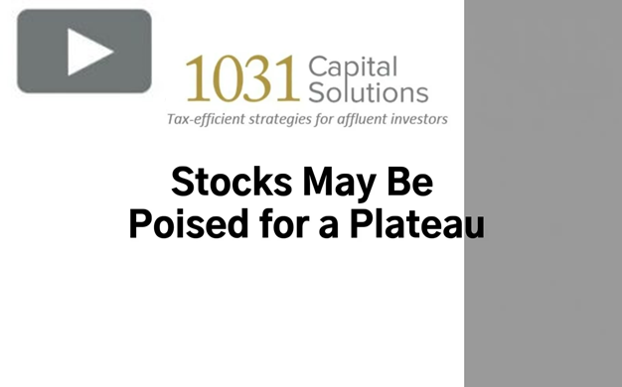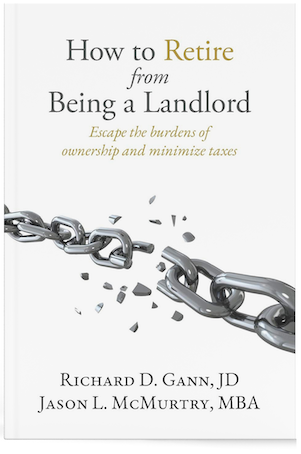
Stocks May Be Poised for a Plateau
The stock market certainly is frothy these days, considering we are in the middle of a pandemic and facing a possible worldwide recession.
One common measure of stock-market health is the price-per-earnings ratio of the S&P 500, or P/E ratio. This measures the weighted average price of hundreds of companies’ stocks against their earnings. Earnings can be trailing or forward, while the price is always current.
For example, if the S&P 500 P/E ratio is 15, the average price of stocks in the index is 15 times their average earnings. When a P/E ratio goes up, it means that people are now willing to pay more money for a stock or index relative to its earnings.
This metric for stocks is analogous to capitalization rates in real estate. A cap rate measures how much people are willing to pay for a type of property relative to its income. Of course, there are two important differences between P/E ratios and cap rates. First, corporate earnings don’t always translate into income for investors, and second, cap rates place the price on the bottom of the fraction bar, not the top.
Let’s come back to P/E ratios. In February 2020, just before the pandemic, the S&P 500’s forward P/E ratio hit 19 for the first time in 20 years. On September 30, the ratio hit 21.5.[i]
Why are people today willing to buy a stock, on average, for a price that is 21.5 times its earnings? If the only answer is that novice millennials are artificially driving stock prices up, then we may have a bubble on our hands.
Statistical analysis supports this view. According to J.P.Morgan, when this ratio has reached 21.5 in the past, the average subsequent five-year return for the S&P 500 has been ZERO. This is not to suggest a complete causal relationship between P/E ratios and five-year stock returns. But the numbers are compelling. If you could go back in time with no other information other than forward P/E ratios, you would sell your S&P 500 index fund every time the number hit 21.5.
In real estate, we can flip cap rates to look like P/E ratios. For example, according to the National Association of Realtors, the national inverse cap rate for Class-A apartments in the first half of 2020 was 18.5.[ii] In other words, institutions were willing to buy Class-A apartments for 18.5 times their earnings or, more specifically, their net operating income.
Knowing that real estate income is tax-advantaged; that properties can be traded without recognizing capital gains; that Class-A apartment revenues are historically stable; and, that such properties have considerable intrinsic value, why would a rational person pay more for an index of stocks than a portfolio of institutionally-managed real estate?
I don’t know the answer, but I suspect a seasoned gambler could explain the rationale better than an economist. If you are interested in shifting from gambling to investing, please, give 1031 Capital Solutions a call today. Thank you.
Numerical examples are for illustration purposes only; individual circumstances will vary. The S&P® 500 Index is a widely recognized capitalization-weighted index that measures the performance of the large-capitalization sector of the U.S. stock market. Direct investment in an index is not possible. Price-to-earnings (P/E) ratio shows the multiple of earnings at which a stock sells. Capitalization rate (also known as cap rate) is used in the world of commercial real estate to indicate the rate of return is expected to be generated on a real estate investment property, and is computed based on the net income which the property is expected to generate and is calculated by dividing net operating income by property asset value and is expressed as a percentage.
[i] https://www.yardeni.com/pub/stockmktperatio.pdf – from Yardeni.com, citing data from Refinitiv and Standard & Poor’s.
[ii] https://www.nar.realtor/blogs/economists-outlook/2020-q1-nar-commercial-survey-shows-early-impact-of-coronavirus
This information is for educational purposes only and does not constitute direct investment advice or a direct offer to buy or sell an investment, and is not to be interpreted as tax or legal advice. Please speak with your own tax and legal advisors for advice/guidance regarding your particular situation. Because investor situations and objectives vary, this information is not intended to indicate suitability for any particular investor. The views of this material are those solely of the author and do not necessarily represent the views of their affiliates.
Investing in real estate and 1031 exchange replacement properties may involve significant risks. These risks include, but are not limited to, lack of liquidity, limited transferability, conflicts of interest, loss of entire investment principal, declining market values, tenant vacancies, and real estate fluctuations based upon a number of factors, which may include changes in interest rates, laws, operating expenses, insurance costs and tenant turnover. Investors should also understand all fees associated with a particular investment and how those fees could affect the overall performance of the investment.
Securities offered through Concorde Investment Services, LLC (CIS), member FINRA/SIPC. Advisory services offered through Concorde Asset Management, LLC (CAM), an SEC registered investment adviser. Insurance products offered through Concorde Insurance Agency, Inc. (CIA). 1031 Capital Solutions is independent of CIS, CAM and CIA.
continue reading
Related Posts
Changes are Happening Quickly – Don’t be Left Behind Managing […]
The Burdens of Managing Rental Property in Retirement Retirement should […]











